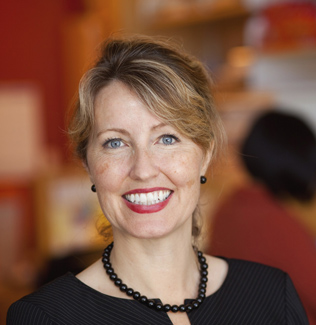UC San Diego, GSK Collaborate

Complete the form below to unlock access to ALL audio articles.
Researchers at the University of California, San Diego School of Medicine and Moores Cancer Center are working with GSK on a bench-to-bedside project to treat leukemia and other diseases by eliminating cancer stem cells. The collaboration is part of GSK’s Discovery Partnerships with Academia (DPAc) program, where academic partners become core members of drug-hunting teams. Catriona Jamieson, MD, PhD, associate professor of medicine and chief of the Division of Regenerative Medicine, will lead UC San Diego’s effort in the new DPAc team.
The UC San Diego-GSK DPAc team will collaborate to discover and develop a new therapeutic compound that inhibits RNA editing, a process cells use to enhance RNA diversity prior to translating genetic information into proteins. Jamieson’s group has shown that uncontrolled RNA editing helps cancer stem cells self-renew, making more malignant cells, in chronic myeloid leukemia and other blood cancers. Cancer stem cells can become dormant and evade chemotherapy and then activate again later, causing relapse of leukemia and other cancers and allowing tumors to resist treatment.

“The problem with leukemia is that in many cases while we can control the symptoms of disease, we can’t completely eradicate it because current therapies don’t block cancer stem cell self-renewal. Enhanced RNA editing is like a cancer stem cell engine, and with this collaboration we want to turn that engine off,” said Jamieson, who is also deputy director of the Sanford Stem Cell Clinical Center and director of stem cell research at UC San Diego Moores Cancer Center. “We’re very fortunate to have this opportunity to work completely in step with a highly adept, dynamic company to take the RNA editing target idea from design to delivery of a new therapy that may prevent cancer relapse.”
GSK launched DPAc as an independent unit in 2010. DPAc’s goal is to expedite promising basic research into drug discovery and development, with the potential to bring innovative new treatments to patients. Each selected project works as a joint team, with the academic and GSK scientists sharing data and working toward common goals. Through this arrangement, academic researchers benefit from GSK’s capabilities in medicinal chemistry and resources, such as state-of-the-art high-throughput screening technology — the expertise and automated equipment required to quickly and accurately screen millions of potential drug compounds for activity against a selected cellular target.
“We are honored to be selected to collaborate with GSK,” said David A. Brenner, MD, vice chancellor for health sciences and dean of UC San Diego School of Medicine. “Paired with GSK’s expertise, our collaborative cancer stem cell research infrastructure, bolstered by the California Institute for Regenerative Medicine, National Cancer Institute and philanthropist T. Denny Sanford, places our DPAc team in the best possible position for success.”
To be considered for DPAc, academic research proposals must have a clear therapeutic hypothesis, a defined target that can likely be addressed with a drug-like molecule and be led by researchers with deep target and disease expertise, access to model systems and clinical samples to progress the target.
“The GSK DPAc program is highly selective and works to identify the best academics with the best targets for partnership,” said Carolyn Buser-Doepner, PhD, vice present and global head of DPAc at GSK. “The UC San Diego collaboration represents several firsts for the DPAc team at GSK — it is our first target in the emerging area of RNA editing and it is our first bench-to-bedside DPAc collaboration with a California university. Furthermore, Dr. Jamieson is an ideal collaborator with deep target and disease expertise, a highly productive preclinical research team with access to clinical samples and the demonstrated ability to translate studies into the clinic.”
“Academic researchers do science well, but we often need industry partners to help translate those discoveries into new therapeutics that will make a difference to patient lives,” said Ida Deichaite, PhD, director of industry relations at Moores Cancer Center. “This DPAc arrangement is a first for the University of California and will hopefully provide a model for future collaborations.”
In addition to a strong collaborative infrastructure, Jamieson credits major support from School of Medicine and Moores Cancer Center leadership, including Brenner, Lawrence Goldstein, PhD, director of the Stem Cell Program, Wolfgang Dillmann, MD, chair of the Department of Medicine, and Scott Lippman, MD, director of the Moores Cancer Center.
“This is a wonderful example of academia-industry collaboration to accelerate drug development and clinical impact,” said Lippman, “and opens the door for cancer stem cell targeting from a completely new angle — inhibition of aberrant RNA editing.”
“Groundbreaking research on the basic behavior of stem cells — during human development and in the pathology of disease — has long been one of our strengths at UC San Diego,” said Goldstein, who is also scientific director of the Sanford Consortium for Regenerative Medicine and director of the Sanford Stem Cell Clinical Center. “Now, those fundamental studies are paying off, as we begin to apply that information in the development of new therapies.”

